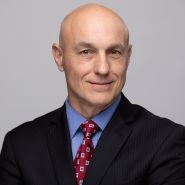Federal Circuit clarifies standard for proper venue in patent cases
- September 22, 2017
- Article
Associated People
As we discussed last month, various district courts across the U.S. have been applying the statutory “regular and established place of business” standard to determine whether venue is proper under 28 U.S.C. § 1400(b) in the wake of the U.S. Supreme Court’s decision in TC Heartland LLC v. Kraft Food Grp. Brands LLC, 137 S. Ct. 1514 (2017). Some of these district courts—most notably the Eastern District of Texas—have applied a relatively expansive interpretation of the “regular and established place of business” standard, while other district courts have applied a narrower interpretation.
Against this backdrop, the Federal Circuit has now issued an opinion that clarifies the “regular and established place of business” standard and establishes a new three-pronged test for determining whether the standard is satisfied. In re Cray Inc., No. 2017-129 (Fed. Cir. Sep. 21, 2017). Specifically, in order for venue to be proper under the standard: “(1) there must be a physical place in the district; (2) it must be a regular and established place of business; and (3) it must be the place of the defendant.” Id., slip op. at 8. Under the first prong, the “place” need not be a “fixed physical presence in the sense of a formal office or store,” but there must still be a “physical, geographical location in the district from which the business of the defendant is carried out.” Id., slip op. at 11. Thus, a virtual space, or mere electronic communications from one person to another in the district, are not sufficient Id. Under the second prong, “sporadic activity cannot create venue”—rather, there must be a stable, established place of business. Id., slip op. at 11-12. Thus, “if an employee can move his or her home out of the district at his or her own instigation, without the approval of the defendant, that would cut against the employee’s home being considered a place of business of the defendant.” Id., slip op. at 12-13. Finally, under the third prong, the regular and established place of business must be a place “of the defendant.” Id., slip op. at 13. Thus, “the defendant must establish or ratify the place of business”—it is not enough that an employee does so on his or her own. Id.
Applying this new three-factor test, the Federal Circuit reversed Judge Rodney Gilstrap’s decision denying Defendant Cray, Inc.’s (“Cray”) motion to transfer Raytheon Co.’s case against Cray out of the Eastern District of Texas due to improper venue. In the decision below, Judge Gilstrap had himself established an amorphous four-factor test for whether a “regular and established place of business” exists: (a) the defendant’s physical presence in the district, (b) the defendant’s representations regarding its presence in the district, (c) the benefits the defendant has received from the district, and (d) the defendant’s targeted interactions with the district. See Raytheon Co. v. Cray, Inc., No. 2:15-CV-01554-JRG (E.D. Tex. June 29, 2017). However, the Federal Circuit found that Judge Gilstrap’s test was improper and “not sufficiently tethered” to the statutory language. In re Cray Inc., No. 2017-129, slip op. at 10. Moreover, under the correct, three-factor test now established by the Federal Circuit, Cray does not have a “regular and established place of business” in the Eastern District of Texas based on the activities of a single Cray salesman operating out of his home in the district. Id., slip op. at 19. Accordingly, the Federal Circuit reversed Judge Gilstrap’s decision and ordered that the suit against Cray be transferred out of the Eastern District of Texas. Id., slip at 20.
The Federal Circuit’s decision is an important development because it clarifies that the “regular and established place of business” standard has definite limits. While it may have appeared after Judge Gilstrap’s original decision that the impact of TC Heartland might be relatively minimal—because the “regular and established place of business” standard might not impose very significant limits on proper venue— it is now clear that the Supreme Court’s decision limiting patent venue in TC Heartland will have a significant effect on where patent infringement cases can be brought against U.S. defendants. For example, many cases that might otherwise have been brought in the Eastern District of Texas will likely now need to be brought elsewhere in order to survive a venue challenge.
We will continue to monitor this developing story.
Recent Publications
5 IP Rules to Know to Protect Your Business in the United States (article in French)
Coaching INPI Newsletter










 Counseling & Strategic Advice
Counseling & Strategic Advice IP Transactions
IP Transactions Litigation
Litigation PTAB Proceedings
PTAB Proceedings Start-Up
Start-Up Technology Transfer
Technology Transfer Trademark & Designs
Trademark & Designs U.S. Patent Procurement (Application Drafting & Prosecution)
U.S. Patent Procurement (Application Drafting & Prosecution)








